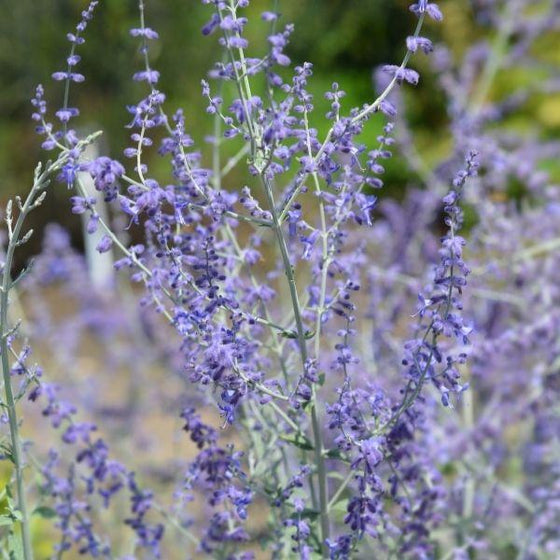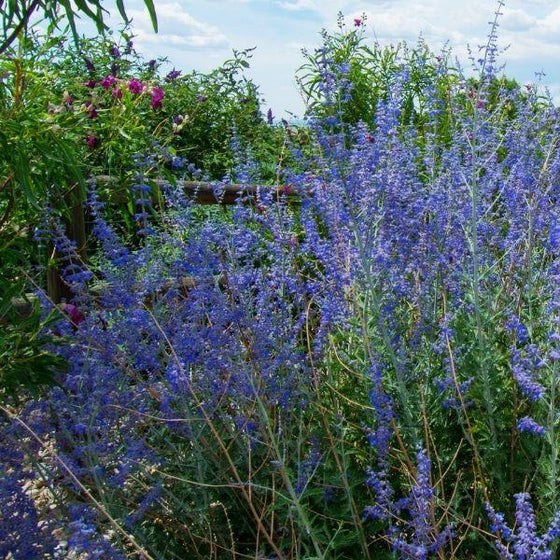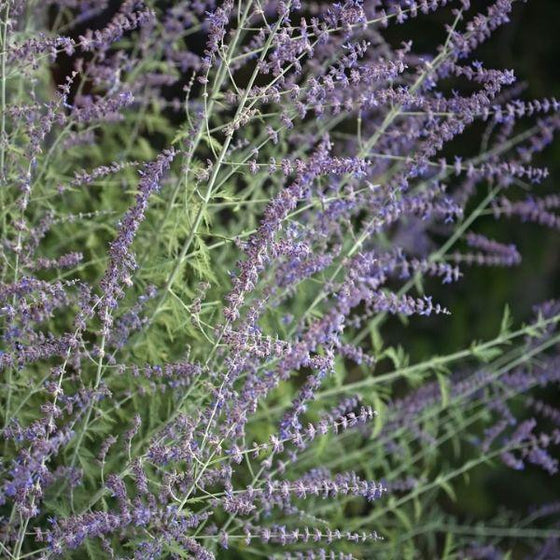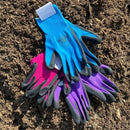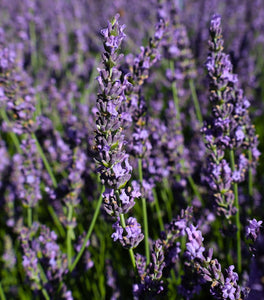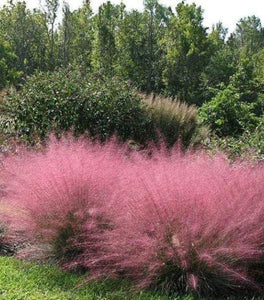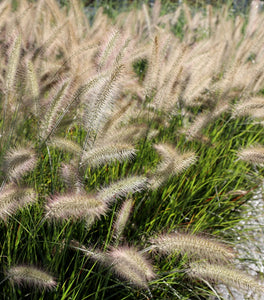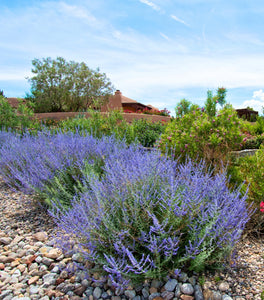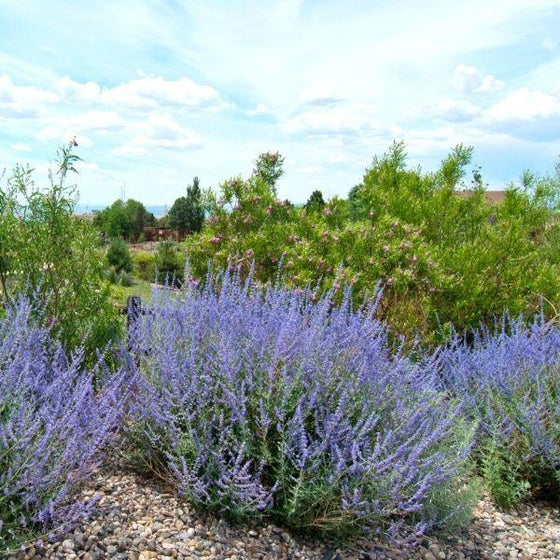
Images Depict Mature Plants
Little Russian Sage Plants for Sale Online
The Little Spire Russian Sage (Perovskia atriplicifolia 'Little Spire') is a compact-growing, semi-woody perennial in the mint family that carries a cloud of small blue-lavender flowers on widely arching stems. Unlike taller Russian Sage, this variety only grows up to 2 feet tall and wide. Nicely complimenting the whorls of flowers are gray-green leaves. Its dense foliage makes it look more like a shrub than a perennial.
This plant thrives on average, dry to medium, well-drained soils, and full sun. Perovskia hates to have "wet feet," so avoid poorly drained soils. Little Spire Russian Sage is drought resistant. The most vigorous flowering occurs in full sun locations. When crushed, the flowers are wonderfully aromatic.
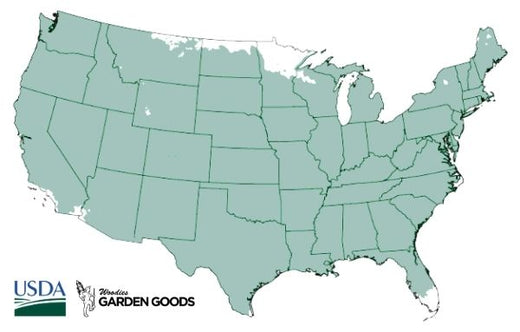
| Hardiness Zone: | 4-9 |
|---|---|
| Mature Height: | Up to 2 feet |
| Mature Width: | Up to 2 feet |
| Sunlight: | Full sun to part sun |
| Water Requirements: | Drought tolerant |
| Selling Points: | Deer resistant, drought tolerant, heat tolerant |
How to Care for Little Spire Russian Sage
Before your purchase your Perovskia Little Spire Russian Sage plant, be sure to read the recommended care instructions to ensure your plant remains happy and healthy for years to come.
How often do I water Little Spire Russian Sage?
After planting your newly purchased bush, provide it with a slow, deep watering to encourage the roots to settle. Water regularly while the plant's roots are establishing, a few times a week. Once your Little Spire Russian Sage has developed a solid root system and acclimated to its new location, it is easy to take care of and only requires watering as needed. This plant prefers dry areas, so do not frequently water the plant. You mustn't overwater your perennial because this could lead to root rot disease. This disease happens when your plant's roots sit in standing water for too long because the soil conditions are not well-draining.

When do I prune a Little Russian Sage Perovskia?
The best time to prune your Little Spire Russian Sage Perovskia is in early spring before new growth emerges. To promote extensive and dense growth, cut back the plant almost to the ground, only a few inches high. It will quickly grow back and fully bloom by summer. If the plant stops blooming in the summer, cut off half the stem to encourage new blooms. Also, if you ever see any dead or dying limbs, feel free to prune them off carefully. Doing so will promote healthy growth to emerge.
How do I plant Little Russian Sage Perovskia?
These plants can be in gardens that receive full to partial sunlight, on average, dry to medium, well-drained soils. Try to avoid soils that retain too much moisture, as this can promote rot. After receiving your plant, carefully remove it from its box and let it sit out for a few days before planting to allow it to acclimate to its new surroundings. When the time comes, remove the bush from its container, loosen the roots with your hand, and place in a hole that is twice as wide but no deeper than the container it came in. backfill with a mix of the original soil and compost or topsoil. Consider adding a layer of mulch around the plant to help retain moisture in the soil conditions.
How do I fertilize Russian Sage Little Spire Perovksias?
To give your perennial Perovskia Little Spire Russian Sage more nutrients, apply an all-purpose fertilizer in the fall. Be sure to follow the package instructions about how much fertilizer to apply. Over-fertilization is much more dangerous than under-fertilization. Overfertilizing your plant could cause its roots to burn, and that will make its way up the stems of your plant. For the best results, fertilize your Little Russian Sage plant in late fall.

